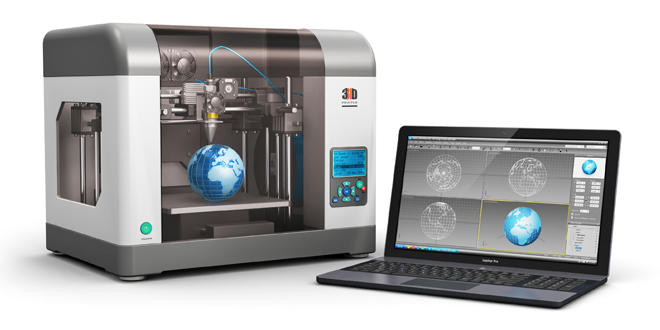Manufacturing Innovation Blog
Powered by the Manufacturing Extension Partnership

Additive manufacturing, or 3D printing, provides cost-effective solutions to vexing industrial problems. The series of tests and evaluations against requirements can often be thought of as experiments. Those experiments could be considered R&D from the point of view of tax law. Wait. What? How did taxes come up here? Let’s back up.
Additive manufacturing (AM) can have profound impact throughout the product development lifecycle. AM helps engineers and designers visualize concepts and preliminary designs, refine final design, and produce final pieces. Through quick and cheap cycles of trial and error, manufacturers can tackle a number of situations including: printing a widget just-in-time that solves a problem at hand, producing small batches of widgets, producing tools, showing an artifact to a potential customer or investor to demonstrate a product concept, and supporting the engineering of product usability or manufacture. Experimentation is needed to refine the design toward functional requirements; to converge on optimal balance of materials or form. That experimentation can take time and cost. Sometimes for complicated projects a great many iterations, or cycles of printing, are necessary.
Companies wanting to dabble in AM have two choices: own their own AM equipment or rely on experts called service bureaus. For background see an earlier blog. Small and Medium-Sized Enterprises (SMEs) can invest and commit to finding and purchasing the right equipment and keeping their workforce well-trained in AM’s use and in new advances in materials and processes. Alternatively, SMEs could rely on service bureaus or experts with large banks of well-maintained AM equipment to execute the SME’s designs. Either way, there are costs involved. Enter Uncle Sam.
Regardless of whether the AM project is done in-house or at a service bureau, there is experimentation. That experimentation could fulfill the 4-part test required for the federal R&D tax credit. Those four parts were discussed during a recent webinar. Typically, if an SME keeps proper logs of the experiments and records of the costs, particularly the labor costs incurred, the expenses associated with experimenting with AM can potentially qualify for a federal tax credit. A tax credit functions as a dollar-for-dollar reduction of the company’s tax liability. This is unlike a deduction which is less generous and functions to reduce a company’s overall income which in turn is subject to taxes. So, the tax benefits can potentially be significant. Of course, a tax expert with a specific understanding of the R&D tax credit should always be consulted to assess whether the credit can be realized in cases of the alternative minimum tax and the eligibility and actual value of any potential tax credits.
So, if your company is considering dabbling in AM, it may be worth considering the time and other expenses you will likely be devoting to evaluating and resolving uncertainties in your processes and interim parts. The R&D tax credit just might help to alleviate the burden of your experimentation – especially for new-to-AM dabblers, even if they aren’t wearing white lab coats!
About the author
Related Posts
Comments
- Reply


